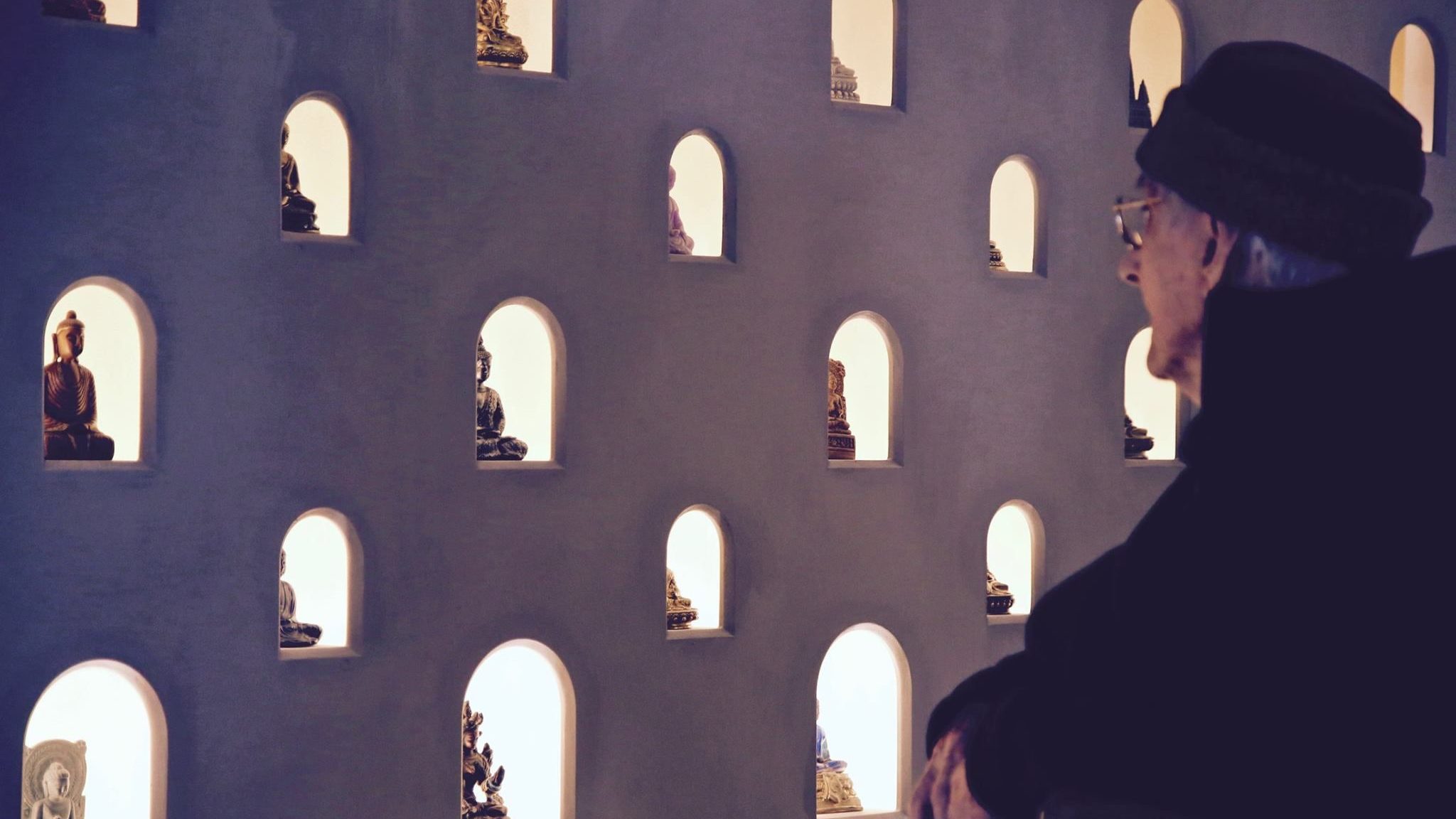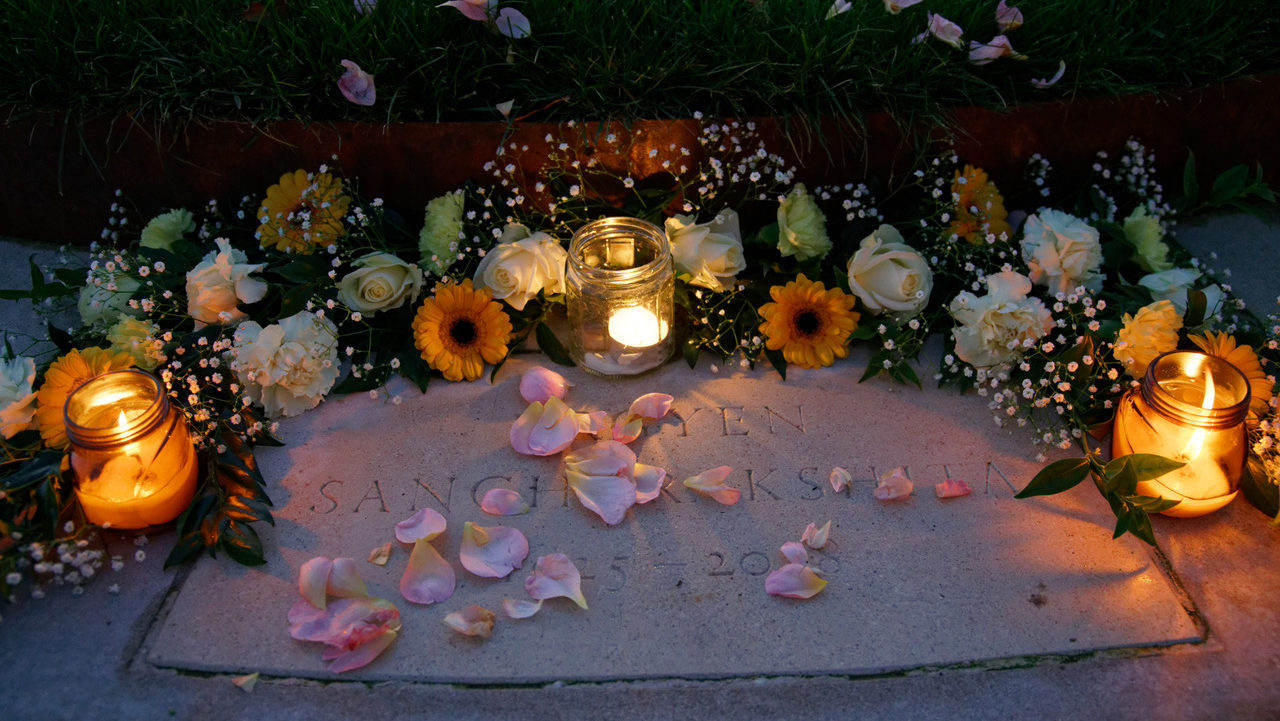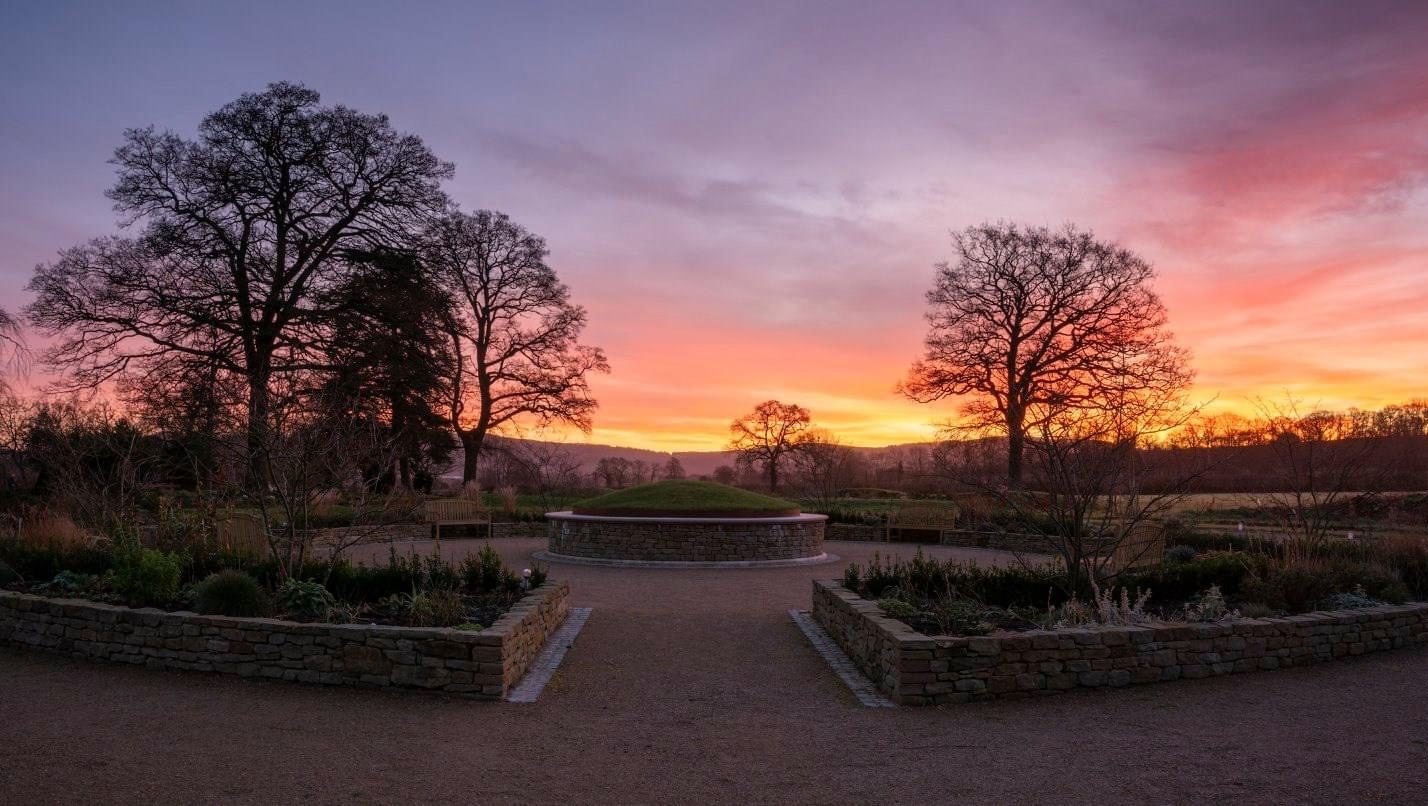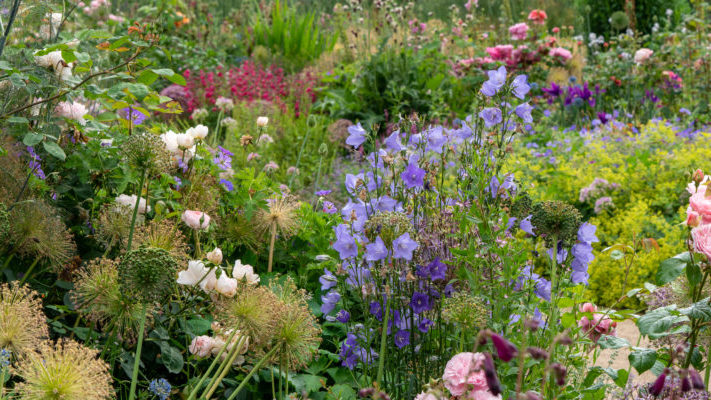The Shrine Room
The Adhisthana Shrine is a visual representation of Adhisthana’s relationship with the whole Triratna Buddhist Movement. The small statues of the Buddha (rupas) have each been ritually placed in the shrine-wall. They have been given by various centres, groups and chapters worldwide. The small rupa above the head of the main Buddha was donated by Bhante Sangharakshita. Together these Buddhas form an aura for the central rupa, an aura of mutual blessings (an adhisthana).
The most recent addition came from York. A small rupa was placed in a niche by the Chair of the York Centre, Shakyapada, in a simple ritual, witnessed by members of the York Sangha and some of the Adhisthana community.

The Memorial Garden
If you stand in the Sangharakshita library, looking through the atrium’s high arch to the fields beyond, you will see a low grassed mound. Set in a mandala-like arrangement of pathways and gardens filled with white flowers, this structure marks the burial site of Urgyen Sangharakshita.
According to legend, when the Buddha was asked what sort of monument should be built over his remains, he, in silence, simply folded three robes to create a squared base upon which he placed his overturned bowl.
In conversations with Bhante during his later years, it was obvious that he had no desire for an elaborate monument. If he did have a preference, he said, it would be for something simple, something that not only referenced the early Buddhist tradition but also that of our own ancient, indigenous traditions.

In early November 2018 over a thousand people attended Urgyen Sangharakshita’s funeral. After the burial, with the sun setting through rising clouds of incense, many quietly and continuously circumambulated the burial mound. That circumambulation continues, and will continue, both as an act of reverence to the Three Jewels and as an expression of profound respect and heartfelt gratitude for all that Bhante has given to our precious Order and community.
This is our most sacred of shrines, and while you are here we encourage you to visit and make use of this space; circumambulate, chant, meet friends or simply be. Spending time in the memorial garden is an opportunity to exist within the adhisthana of the Triratna mandala of practice, through time and across space.

The Gardens
When initially purchased, there was little more than a field. Over the years this has been transformed into an amazing display of colour and life. There are multiple ponds, a sunken garden, a fire pit, swathes of woodland, a wildflower meadow and the Swales – a series of stepped ponds which are our natural waste water treatment system.
These gardens continue to be developed, with new trees, hedges and sustainable low-maintainece planting schemes. Nevertheless, Sanghadeva, the gardener, has a lot of work on his plate, and always appreciates help with weeding from those with experience! If you would like to find out more about coming to help in the gardens, visit our volunteering page.

The Urgyen House
Formerly called the Urgyen Annex, Urgyen House was Bhante’s home for the last five-and-a-half years of his life. Along with the Sangharakshita Library, Urgyen House provided not only living quarters for Bhante but a place for his entire collection of books, letters, papers, thangkas, and artifacts. The Urgyen Sangharakshita Trust have embarked on a project to ensure the long-term preservation of this collection and of Urgyen House.
Bhante’s living room and bedroom have been kept as they were in his lifetime. The upper floor houses the archives and an office. Here the archives can be properly preserved and managed, as well as accessed for research, enquiry, and exhibition.
After conversion work, Urgyen House reopened in 2021 and you are now able to visit. There is a display about Bhante’s life and work, and an exhibition showing articles not normally on view. This exhibition connects Bhante’s final years at Urgyen House with the youthful searcher for truth. There is also a shrine room, suitable for private ordinations.

The Sangharakshita Library
The library is at the heart of the Adhisthana site, and is the reason Adhisthana was originally purchased. Sangharakshita recognised a need for a central place to keep all his books after his death, and thus the project was born.
The library contains Sangharakshita’s many books, on topics ranging from poetry, history and philosophy, as well as a very extensive Dharma books section. The library also contains as many of the 100 books Sangharakshita brought back with him from India as we can find. There is also a lending library you can use while you are here.

Connected Shrine Room
Adhisthana has designed and built a dedicated Connected Shrine Room in the Sangharakshita Library to facilitate the production of online retreats and Dharma content. Like a shrine room it is a sacred space used for meditation, devotional practice and Dharma teaching with the added dimension that it can reach thousands of people around the world.
The shrine room has been designed to minimise sound disturbance, to provide ease and comfort for retreat leaders, to contain a well-designed, dedicated tech setup that provides high-quality audio and video, to facilitate ease of connection between the leader and retreatants and to offer an aesthetic and recognisable backdrop. It’s even designed to withstand power and internet outages without dropping the connection.
